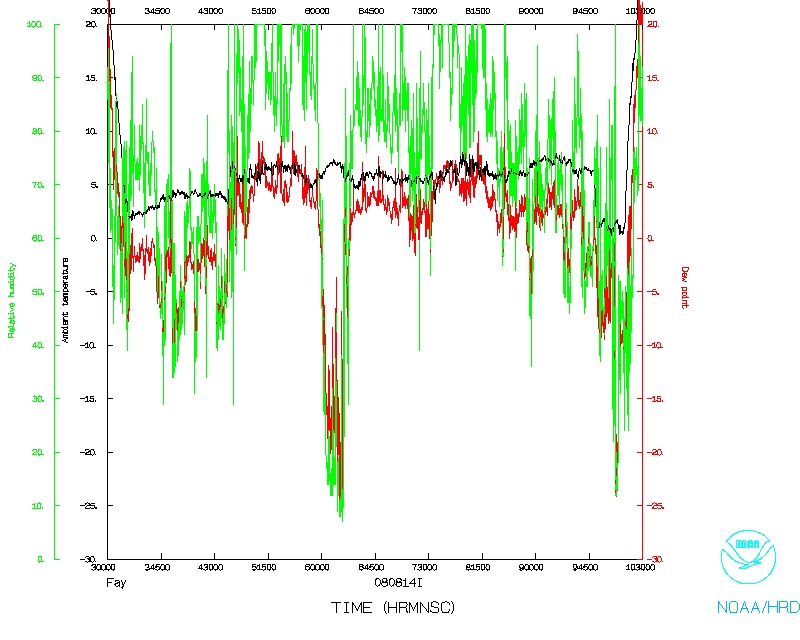Mission Summary
20080814I1 Aircraft 43RF
AL92 (Pre-TS Fay)
3-D Doppler Winds Operational Mission
Scientific Crew (43RF)
| Lead Scientist | Jason Dunion |
| Radar Scientist | John Gamache |
| Dropsonde Scientist | Joe Cione |
Flight Crew (43RF)
| Pilots | Barry Choy
Carl Newman
Amelia Ebhardt |
| Flight Director | Jack Parrish |
| Navigators | Ryan Kidder
Tim Gallagher |
| Flt. Eng. | Dewie Floyd |
| Data Techs |
Terry Lynch
Jeff Smith |
| Elec. Tech | Damon Sans Souci |
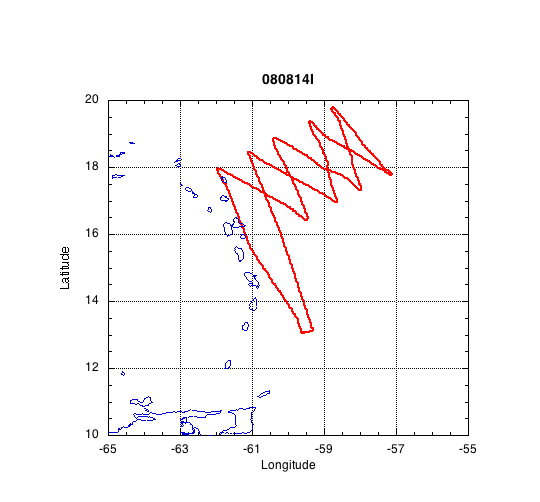
Mission Plan :
NOAA 43RF will participate in an EMC 3-D Doppler Winds mission (with options
to conduct HRD's Convective Burst and Arc Cloud Modules) into AL92
(Pre-TS Fay). The flight called for a diamond pattern with an IP
south-southwest of the mid-level convection and east of a broad area of
low-level vorticity. The leg lengths were to be ~150 nm flown at 12,000 ft
altitude and GPS dropsondes would be launched at the IP and at each turn point
(11 dropsondes total). Additional drops would be made during the second half
of the diamond pattern at the mid-points between waypoints 6-11 (5 dropsondes
total) and at the storm "center" (position provided by NHC). Doppler wind
analyses will be transmitted off the plane in real-time, if possible. The
flight track and 17 GPS dropsonde points are shown in Fig. 1.
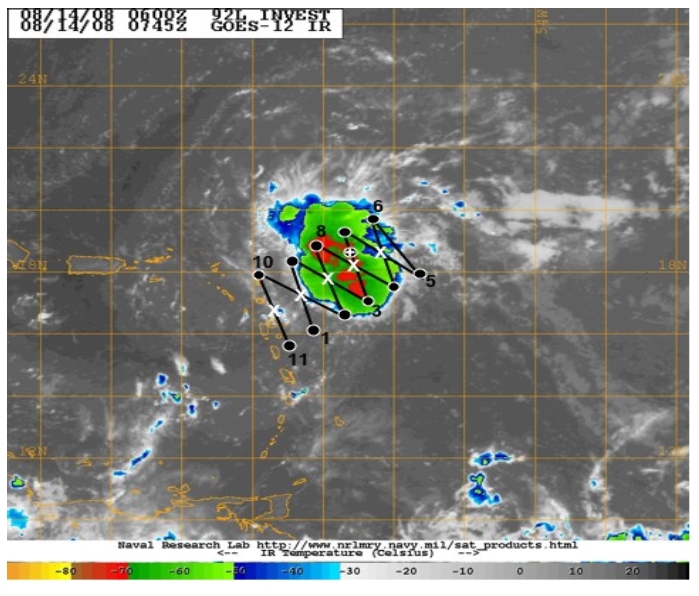
Fig. 1: Flight track (black line) for EMC 3-D Doppler mission 20080814I.
GPS dropsondes launched at the IP and turn points (11 total) are indicated by
black circles. GPS dropsondes launched during the second half of the diamond
pattern at the mid-points between way points 6-11 (5 dropsondes total) are
indicated by "X" and a drop made at the storm "center" (position provided by
NHC) is indicated by "+".
Mission Summary :
| Take off
| Landing
| Barbados | 02:58 UTC
| Barbados | 10:31 UTC
| |
a) Synoptic Situation
On 14 August, AL92 was positioned south of a deep layer ridge and tracking
slowly to the west-northwest (Fig. 2, left). Vertical wind shear analyses from
UW-CIMSS indicated ~10-15 kt of shear over AL92 (Fig. 2, right) which was being
driven by a combination of 15-20 kt low-level easterlies and 20-30 kt
upper-level south-southeasterlies (Fig. 3). Figure 3 (right) also indicates
that upper-level outflow over AL92 was somewhat restricted in the SE quadrant
and to the south of the system. UW/CIMSS relative vorticity analyses indicate
that AL92 was associated with broad areas of strong low-level (850 mb)
vorticity and weak mid-level (500 mb) vorticity (Fig. 4).
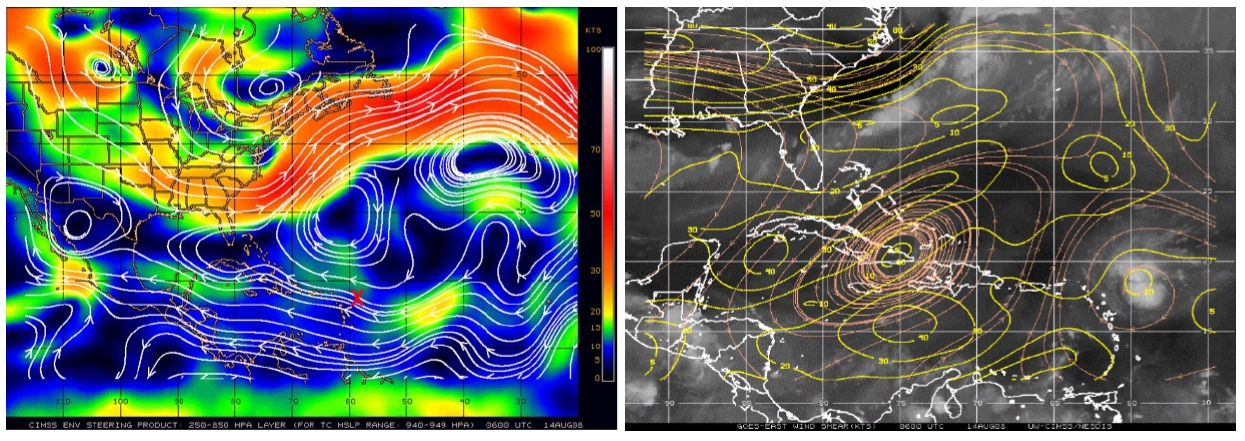
Fig. 2: (Left) plot of 250-850 mb deep layer mean steering
[magnitude (direction) of the steering flow is indicated by colored shading
(white streamlines) and the convective center is shown by the red "X"] for
14 Aug 0600 UTC. (Right) vertical wind shear [magnitude (direction)
of the wind shear is indicated by yellow contours (orange streamlines)]) for
14 Aug 0600 UTC. AL92 was located NE of the Windward Islands at this time.
Images courtesy of UW/CIMSS.
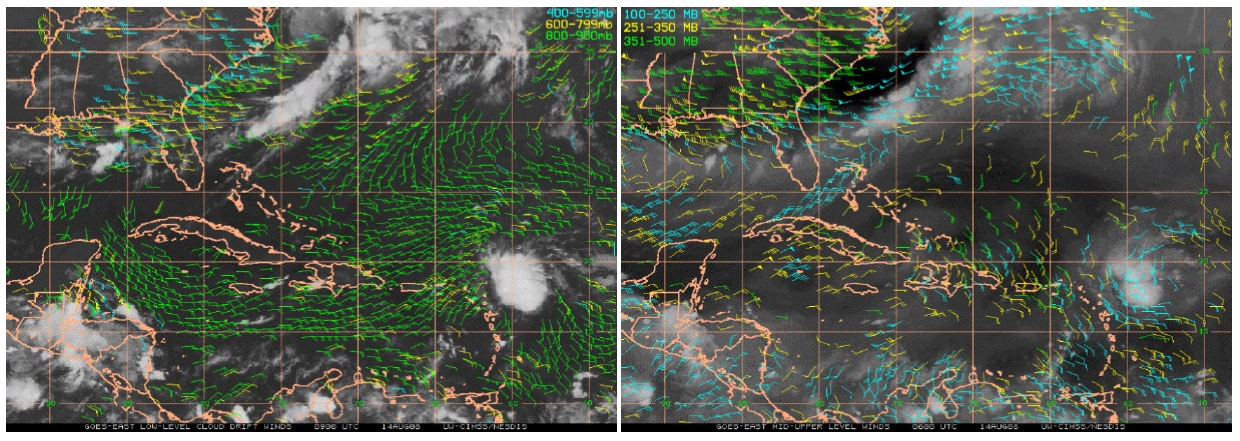
Fig. 3: Plots of (left) low to mid-level GOES cloud-drift winds and
(right) mid to upper-level GOES water vapor winds for 14 August 0300 and 0600
UTC.
Images courtesy of UW/CIMSS.
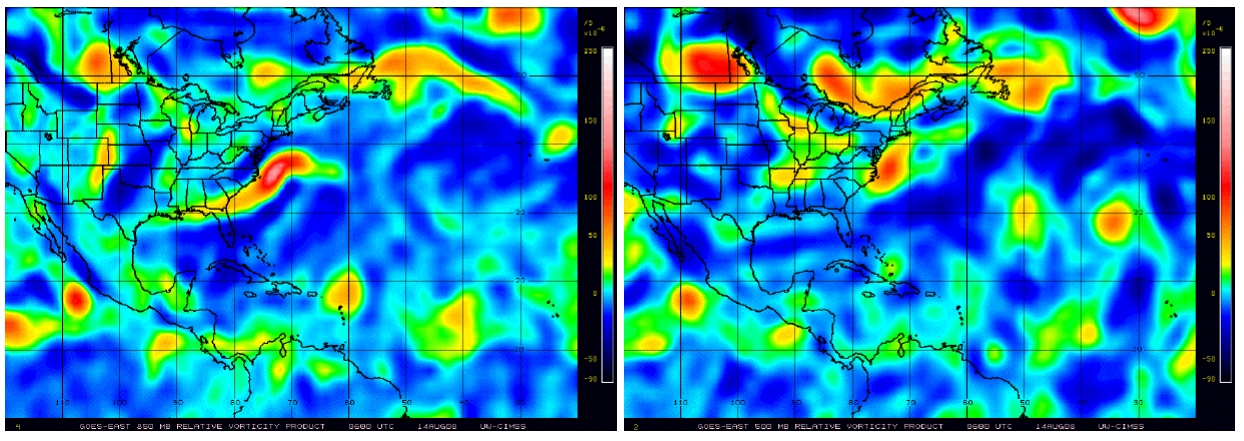
Fig. 4: Plots of (left) 850 mb and (right) 500 mb relative vorticity
for 14 August 0600 UTC.
Images courtesy of UW/CIMSS.
b) Mission Specifics
Take-off was from Barbados at 0258 UTC. AL92 was a disorganized disturbance
with a broad, relatively cloud-free low-level circulation that was displaced
several hundred km to the southwest of an area of fairly deep (-60 to -70°C
cloud tops) convection. 37 GHz microwave imagery from SSM/I clearly indicated
this separation between the low-level circulation (located over the northern
Windward Islands) and deep convection and presented the classic appearance of
a sheared system (Fig. 5, left). The 37 GHz satellite imagery also suggested
the presence of low to mid-level dry SAL wrapping around the southwest side of
the low-level circulation as well as a SAL outbreak impinging on the convection
from the east (in the northeast and southeast quadrants). This is confirmed by
SSM/I total precipitable water (TPW) imagery (Fig. 5, right). TPW values <45
mm (greens to blues) suggest extremely dry SAL air in the lower to middle
levels of the atmosphere. Interestingly, drops #2 and #9 indicated the
presence of very dry air from ~800-900 mb and 600-750 mb respectively. It is
unclear if this dry air is SAL that was just much closer to the convection that
the satellite imagery suggested or if it was associated with some local
subsidence near the periphery of the convection.

Fig. 5: Plots of (left) SSM/I 37 GHz microwave imagery and (right)
SSM/I total precipitable water imagery for 14 August 1046 UTC.
Images courtesy of NRL/Monterey.
The flight pattern was executed as planned. GPS dropsondes launched during
this mission supported the cloud and moisture patterns evident in Fig. 5,
suggesting a largely cloud-free surface circulation near the northern Windward
Islands. GPS dropsondes launched northeast of this low-level circulation in
the convective region of AL92 indicated that strong (20-25 kt) southeasterlies
and east-southeasterlies at the surface were blowing though this convective
region of AL92 (Fig. 6, left). Doppler winds (1 km above the surface) were in
excellent agreement with these GPS dropsonde surface wind observations (Fig.
6, right). The lowest GPS dropsonde pressure observed during the mission was
1010.1 mb at drop #10, just NE of the low-level vorticity center. Also, a
special drop was made in the convective region of AL92 at 17.5°N 58.8°W
(based on an estimated center by NOAA/NHC). However, this drop (and
surrounding drops) clearly indicated that AL92's convective region had no
defined surface circulation. One Doppler wind analysis was transmitted off
the P-3 in real-time during this mission.
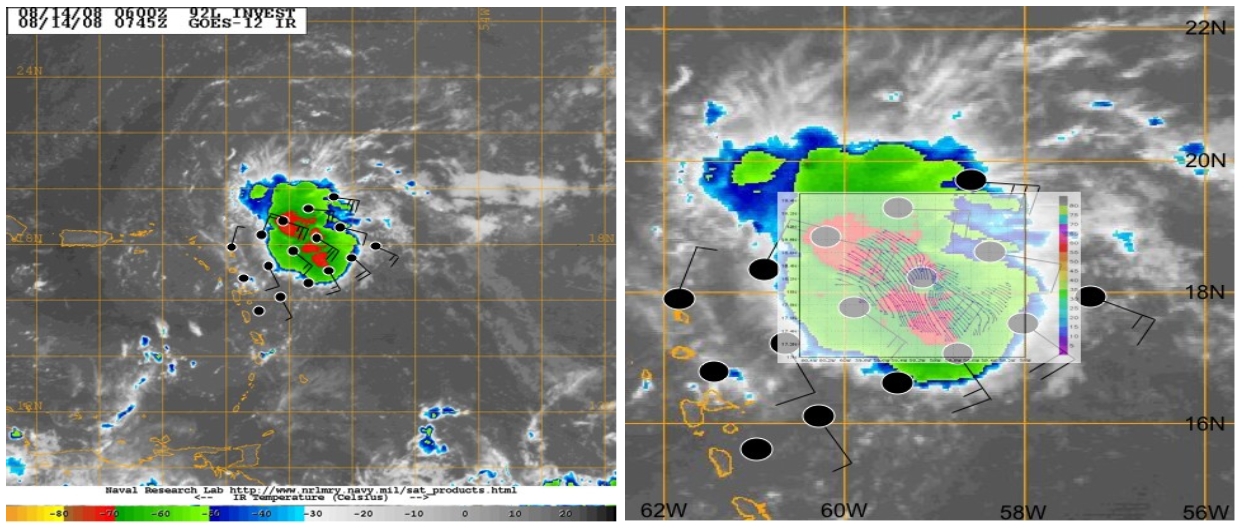
Fig. 6: GOES infrared satellite image of AL 92 on 14 August 0745 UTC
with overlaid (left) GPS dropsonde surface winds (kt) and (right) GPS dropsonde
surface winds (kt) and 1 km Doppler winds (derived from the P-3 tail Doppler
radar).
Images courtesy of NRL/Monterey.
Problems :
There were no major problems related to this flight. A few minor issues
included: the tail Doppler radar was not set in FAST mode until 0457 UTC, just
after turn point #3. Also, the select buttons on the roller ball used for
workstation mouse control was responding poorly and may need to be replaced.
All 17 GPS dropsondes worked well, though drop #17 lost winds below ~875 mb.
Mission Data
FDir manifest |
1 second data file |
NetCDF data file
Page last updated Sept. 17, 2008
Return to Mission page.








